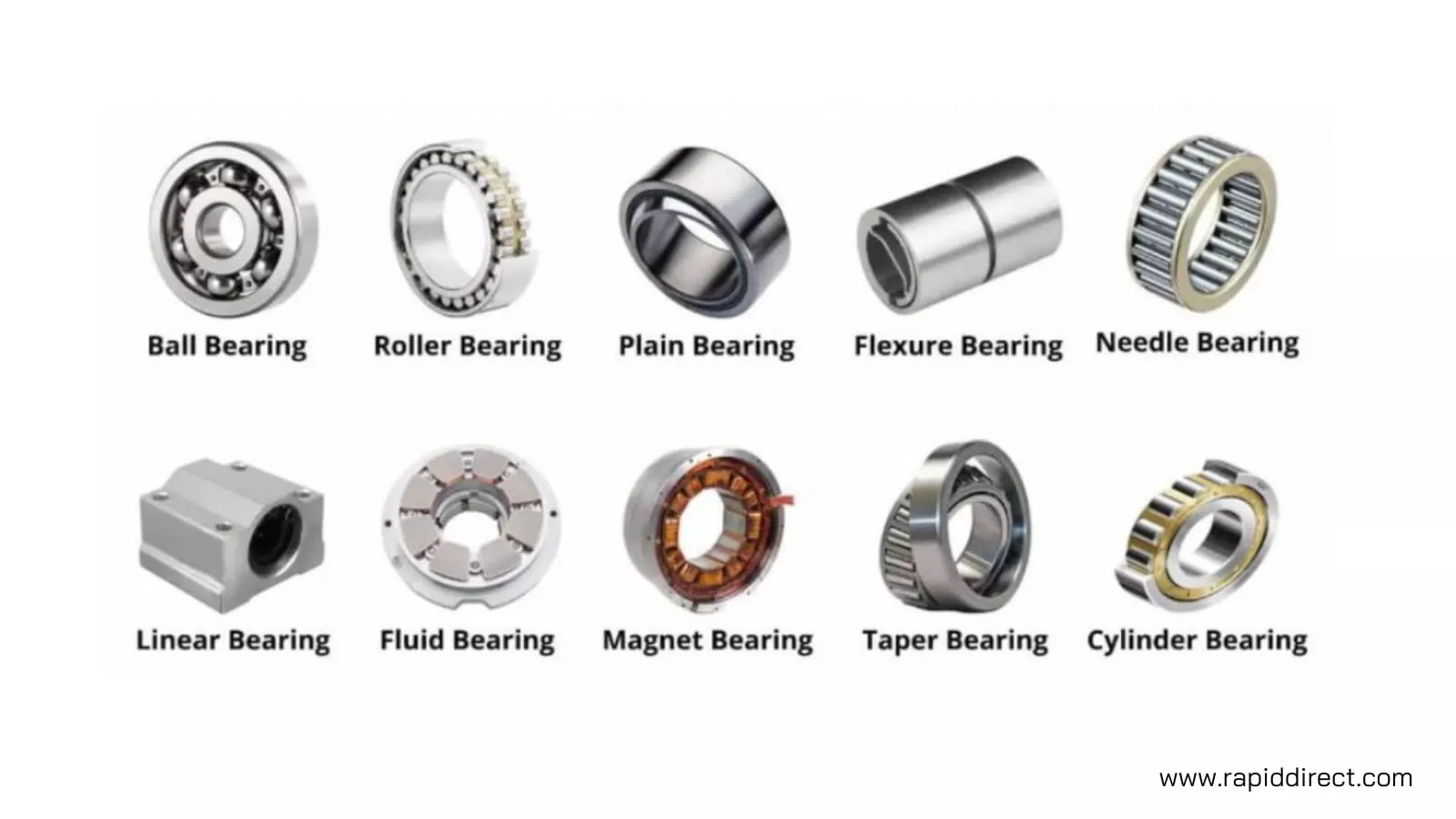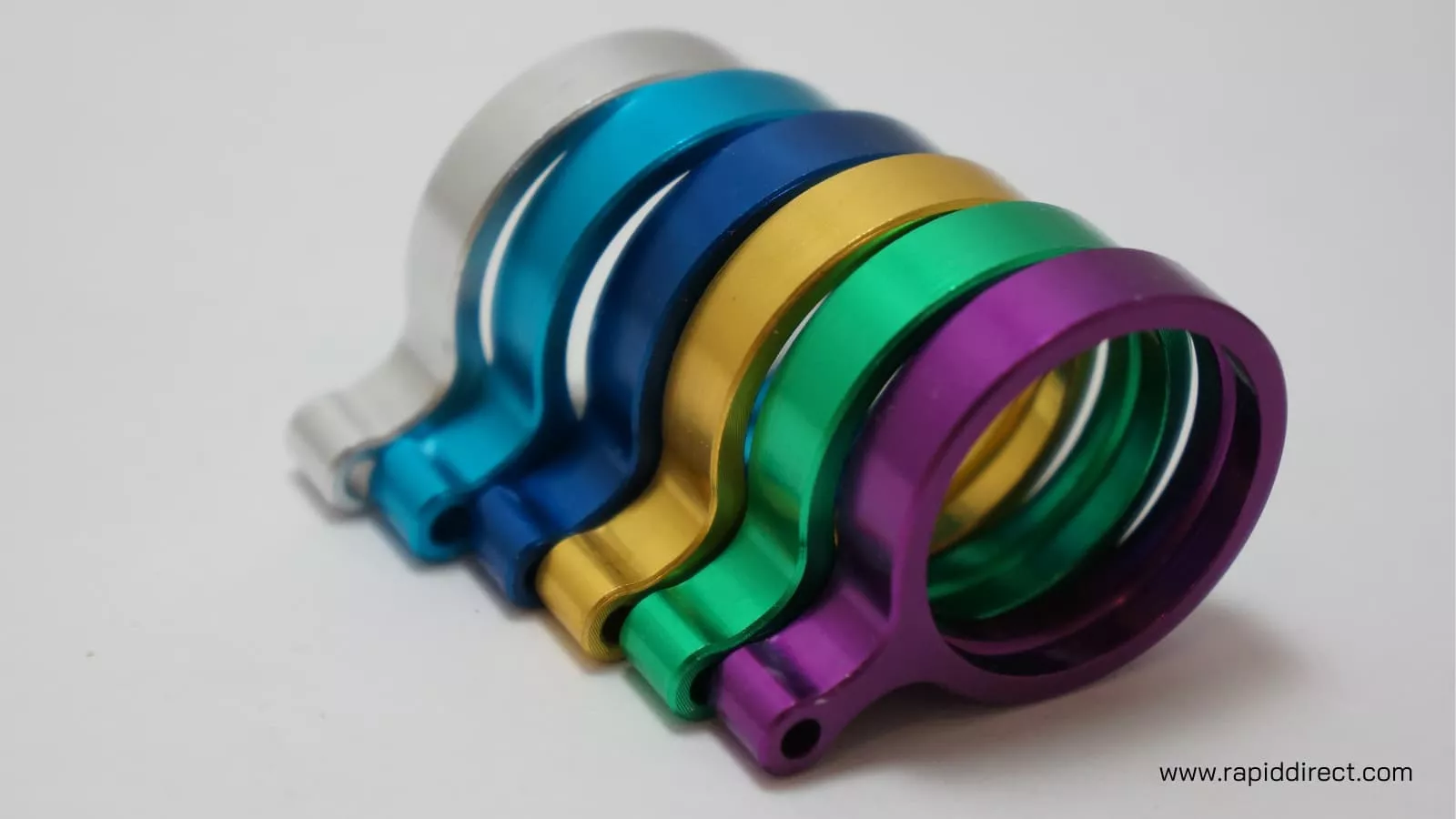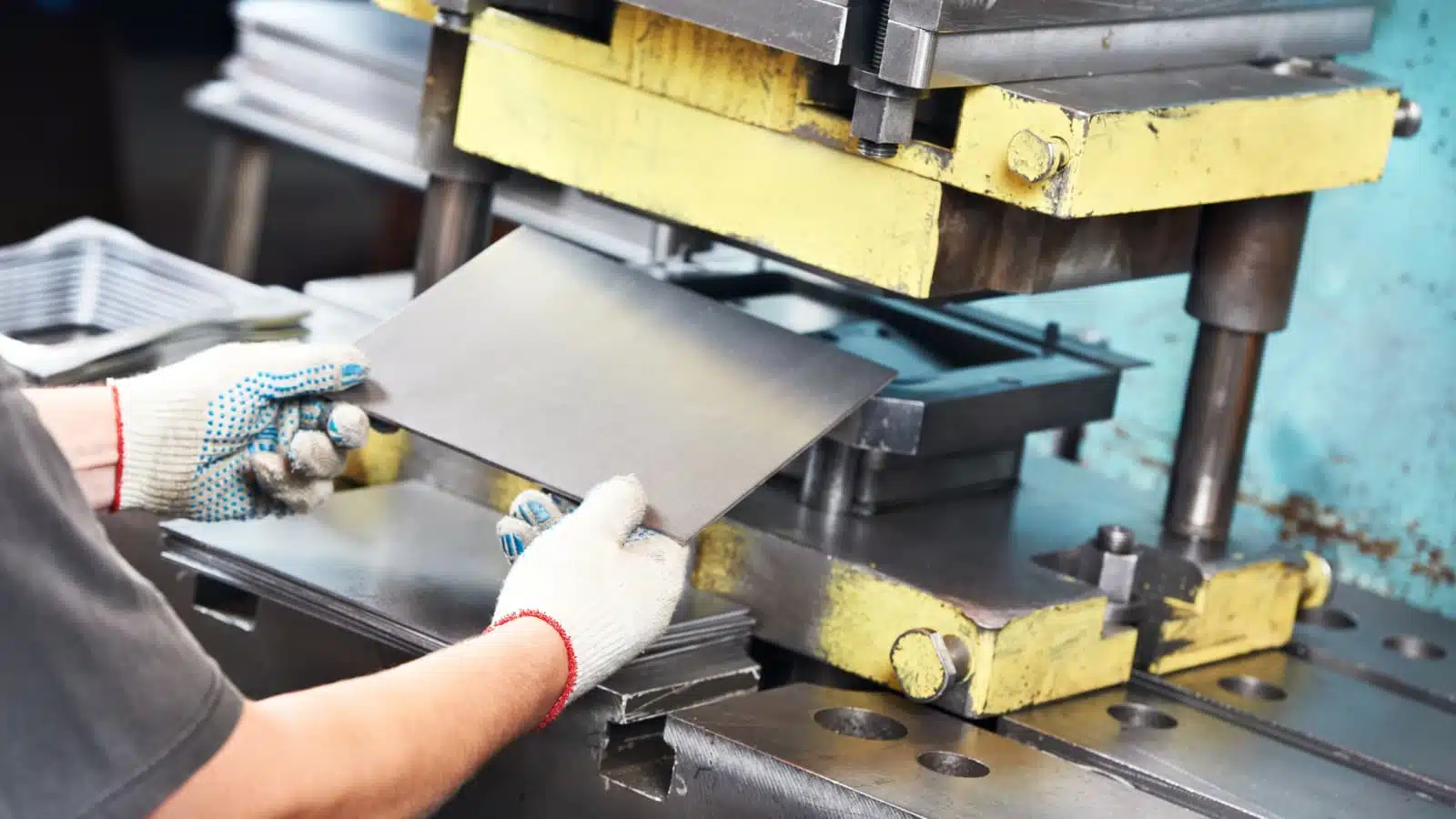iPhone Pros have been designed with aluminum and stainless steel frames for many years, making the phones slightly heavier than customers desire. However, this is no longer the case with the newly launched iPhone 15 Pros. The new iPhone 15 Pro and iPhone 15 Pro Max are designed with brushed Grade 5 titanium frames.
Titanium offers several other advantages, but there are also some challenges when it comes to machining titanium. So, why did Apple choose titanium for the iPhone 15 Pros? Why is it a better choice compared to steel? This article will answer the questions, covering the features of the Grade 5 titanium. We will also examine the challenges of machining titanium and give practical tips to get the best results.
Overview of iPhone 15 Pros
With the use of titanium on the iPhone 15 and 15 Pro Max models, there are many improved features. Here are some of the exciting ones:
Brushed Finish
The introduction of titanium in the iPhone 15 Pro brings about a notable alteration to the chassis appearance. In previous iPhone Pro models, the chassis was crafted from highly polished stainless steel, resulting in a mirror-like finish. However, in the case of the iPhone 15 Pro, a brushed finish is featured. This is noticeably less reflective than the finishes seen on earlier models.

The exquisite and finely brushed texture on the titanium bands is achieved through a meticulous process involving precision machining, sanding, brushing, and blasting. The iPhone 15 Pro also boasts new contoured edges and the slimmest borders ever seen on an iPhone. This enhances its overall ergonomic feel when held in your hand.
Moreover, the new brushed texture is expected to make scratches less noticeable on the devices. Likewise, it enhances resistance to fingerprints and makes them less visible. It also makes the fingerprints easier to wipe off compared to steel or glossy finishes.
Reduction in Device Weight
You’ll quickly feel the advantage of reduced weight when holding the device. Titanium has equal strength to stainless steel but comes at just half the weight. As a result, the titanium chassis is anticipated to contribute to lighter devices. In particular, the iPhone 15 Pro and 15 Pro Max are approximately 18 grams lighter than their previous models. This marks a significant 10% reduction in weight.
New Titanium Gray Color Option

The incorporation of titanium had an impact on the color choices considered for the iPhone 15 Pro and 15 Pro Max. The new color lineup includes:
- Space Black / Space Gray
- Blue
- Silver
- Titanium Gray
Apple decided to shift towards more grayish tones for the iPhone 15 Pro lineup. They introduced a color option internally referred to as “Titanium Gray.” As the name suggests, Titanium Gray closely resembles the natural color of the titanium. It falls between Silver and the Space Black option in terms of darkness. This addition enhances the aesthetic choices for the iPhone 15 Pro.
Evolution of iPhone Steel/Aluminum Frame to Titanium Frame
After consistently favoring aluminum, Apple’s gradual transition to titanium appears to mark the end of a significant era. Over the past two decades, Apple has played a pivotal role in revolutionizing the application of aluminum and stainless steel. Apple’s very first iPhone, also known as the iPhone 2G, featured an aluminum frame. The aluminum gave the device a sleek and modern look while providing reasonable durability. After that, many other iPhone models have used aluminum frames. They include the 3G and 3GS models, iPhone 6 and 6 Plus, iPhone 7 and 8 series, and the iPhone 11 series.
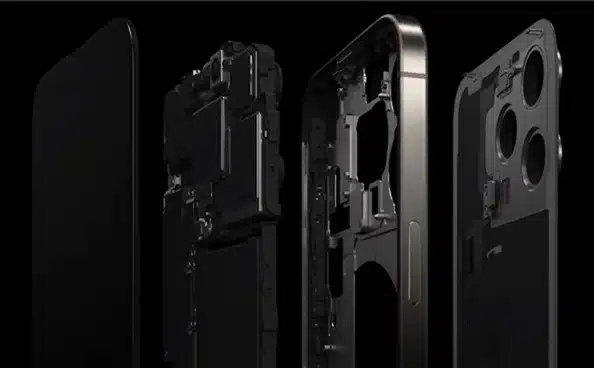
Apple first introduced a significant change with the iPhone 4 and 5 using a stainless steel frame. This frame added a more premium feel to the device while improving durability. After a long pause, Apple returned to stainless steel frames with the iPhone X, XR, XS, and XS Max. While the standard iPhone 12, 13, and 14 models had aluminum frames, the Pro models used stainless steel frames.
As part of ongoing efforts to improve their devices’ quality, durability, and aesthetics, Apple has introduced the titanium frame on the iPhone 15 Pro and 15 Pro Max. The Grade 5 titanium is known for its excellent strength-to-weight ratio, making it an attractive choice for a smartphone frame. But what exactly is the Grade 5 titanium?
iPhone 15 Pro with Grade 5 Titanium: Exploring the Power of a Metal
Grade 5 Titanium is a titanium alloy composed of titanium, incorporating 6% aluminum and 4% vanadium. Ti-6Al-4V has exceptional corrosion resistance, making it a favored choice across diverse industries. The reasons for Apple’s adoption of Grade 5 Titanium for the iPhone 15 Pro can likely be attributed to the material’s inherent lightweight, strength, and hardness.
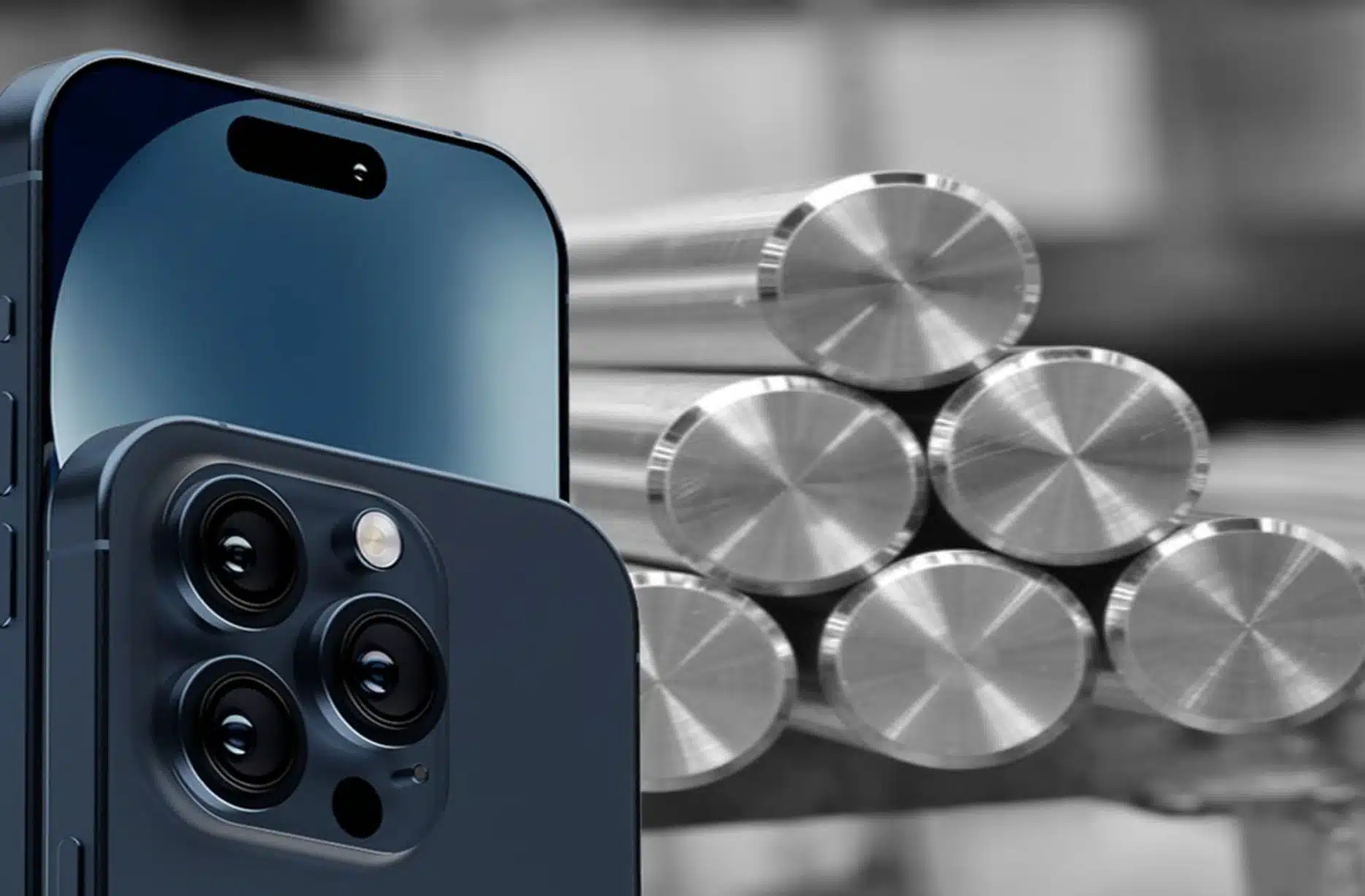
Superior Strength-to-Weight Ratio
Regarding the strength-to-weight ratio, titanium stands out, particularly Grade 5 titanium. It provides strength levels that rival many steel types. At the same time, it weighs nearly half as much as its steel counterpart. Aluminum, employed in previous iPhone models, may be lighter than titanium. However, it falls significantly short in terms of strength.
iPhone devices need to strike a delicate balance between durability and portability. A higher strength-to-weight ratio ensures that the device remains sturdy and resilient while keeping its weight to a minimum. Therefore, an improved overall user experience could make the device more comfortable to hold and carry without compromising its structural integrity.
Corrosion Resistance
Both titanium and aluminum demonstrate commendable resistance to corrosion. Nevertheless, titanium boasts a notable advantage, particularly in challenging environments rich in saline or chlorine. In such conditions, titanium’s corrosion resistance truly shines and proves significantly superior to that of steel. This is especially true when dealing with non-stainless steel or steel that hasn’t undergone specific treatments.
Grade 5 titanium is also highly flexible. While aluminum may be too pliable and steel may be rigid, titanium balances those properties. As a result, the iPhone 15 Pro becomes more resilient against deformation and bending.
The exceptional corrosion resistance of Grade 5 titanium can contribute significantly to the longevity of devices like the iPhone 15 Pro. By withstanding harsh environmental factors, Grade 5 titanium can help ensure that the device remains resilient over time. This corrosion resistance is crucial for mobile devices, as it helps protect the internal components, extending the device’s lifespan and overall durability.
Aesthetic Appeal
Grade 5 titanium imparts a premium, high-end appearance to the devices. Its natural luster and polished finish contribute to a sleek and luxurious feel. As a result, it elevates the overall look and perceived quality of the iPhone 15 Pro models. This premium look and feel align with Apple’s commitment to creating visually stunning and sophisticated devices.
Incorporating Grade 5 titanium expands the color and finish options for the iPhone 15 Pro lineup. Choices like Space Black/Space Gray, Blue, Silver, and Titanium Gray provide customers with diverse aesthetics to suit their personal preferences. These options add to the device’s visual appeal and enable users to select a finish that aligns with their style and taste.
Thermal Properties
Grade 5 titanium presents a thermal expansion rate that closely aligns with that of glass. This feature holds immense importance when integrated into devices like smartphones. The screens of iPhones, for instance, are predominantly composed of glass. Using a metal with a similar thermal expansion to glass helps to reduce the risk of temperature-influenced deterioration. This compatibility helps maintain the device’s stability and overall performance.
The capacity for heat dissipation is particularly significant for mobile devices. It assists in preventing overheating and maintaining optimal performance even under demanding conditions. Moreover, Grade 5 titanium is heat-treatable. This nature renders it exceptionally suitable for various manufacturing applications. It can be easily welded and fabricated and has an impressive combination of high strength and corrosion resistance.
Challenges and Solutions in Machining Titanium
Titanium-made iPhone 15 Pros offer many benefits to users, but it can be quite difficult to machine titanium effectively. How difficult is it exactly? And how do manufacturers overcome the challenges involved? You’ll find out in this section.
Difficulties Due to Material Properties
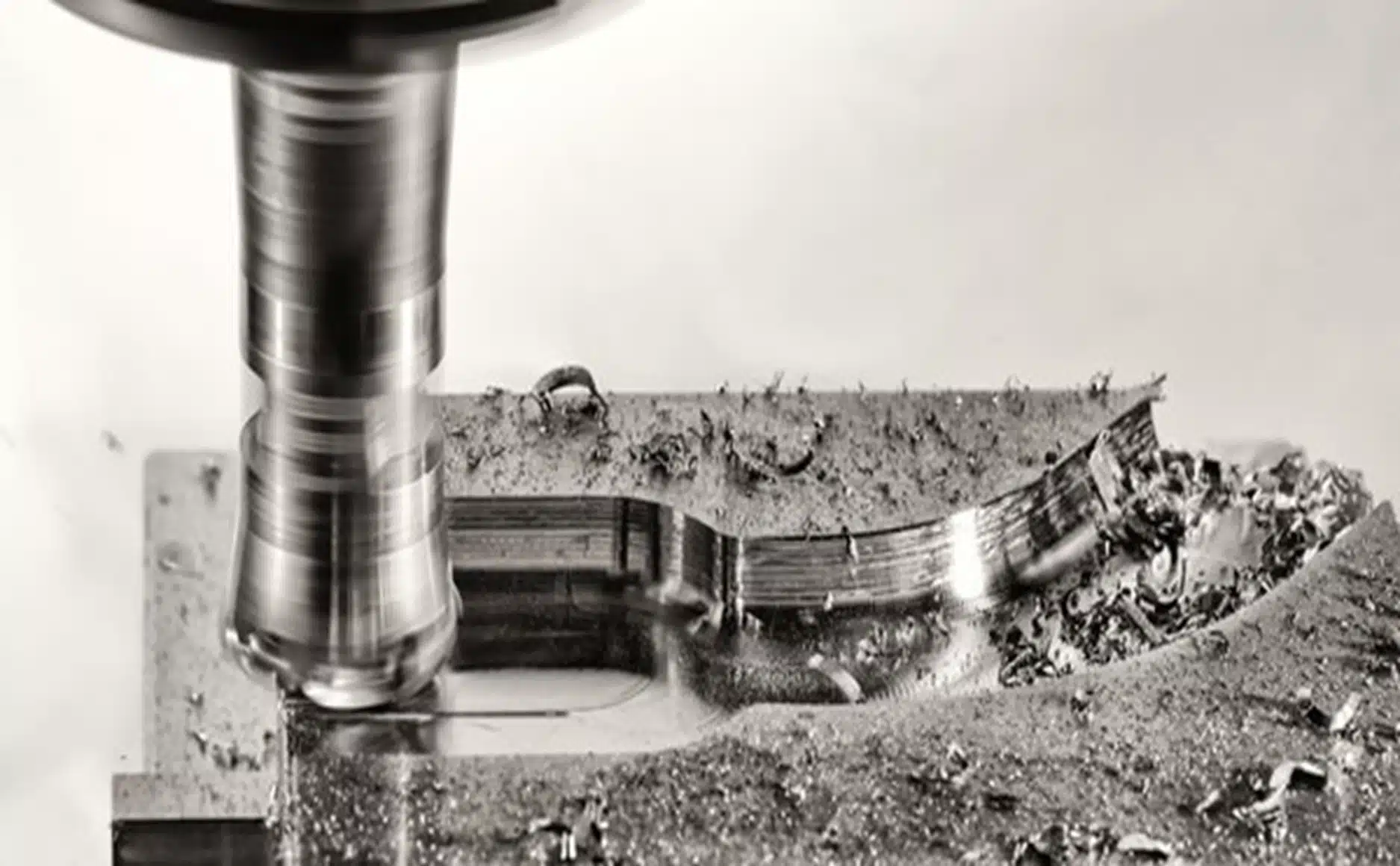
1. Low Thermal Conductivity
As a thermal insulator, titanium presents challenges during machining due to its low thermal conductivity. The heat generated in the machining process tends to accumulate in the work zone rather than dissipating efficiently. This can lead to high temperatures exceeding 1000℃. This heat accumulation can result in wear, chipping, tool blunting, or even breakage.
This challenge becomes even more pronounced when machining easily deformable components, such as thin walls or rings. Achieving the desired dimensional accuracy in such cases can be quite complex. Local deformation can exceed the elastic limit as the tool pushes on the workpiece material. This may lead to plastic deformation and a significant increase in material strength and hardness at the cutting point.
2. Work Hardening
Titanium alloys are characterized by a hexagonal close-packed (HCP) crystal structure, which limits their slip systems and flexibility. Consequently, they are susceptible to work hardening. This process increases the material’s hardness and strength through plastic deformation. It can lead to accelerated tool wear, heightened cutting forces, and reduced machinability.
Furthermore, work hardening can introduce residual stresses within the machined components. Residual stresses are internal pressures that persist after the removal of external loads. As a result, it can potentially cause problems such as distortion, cracking, and reduced fatigue life.
3. Chemical Reactivity
Titanium alloys are prone to reactivity with nitrogen, hydrogen, oxygen, and carbon at elevated temperatures. This reaction results in surface oxidation and potential contamination of machined parts. The outcomes can negatively impact the corrosion resistance, fatigue strength, and biocompatibility of titanium alloys. Additionally, titanium alloys tend to adhere to the tool surfaces, forming a built-up edge. Therefore, it can result in issues like chipping, galling, and tool failure.
Difficulties During Machining Processes
1. High Heat Generated
Titanium alloys are renowned for their strength but pose considerable challenges in machining. They require high cutting forces to enable adequate machining. Maintaining a suitably cool temperature during the machining of titanium alloys is very challenging due to their low thermal conductivity.
This can lead to several issues, including vibration, accelerated tool wear, and the production of faulty parts. Additionally, these alloys exhibit poor heat conduction, which results in heat accumulation in both the tool and the workpiece. This may also potentially lead to expansion, distortion, and even the risk of fires.
2. Vibration and Chatter
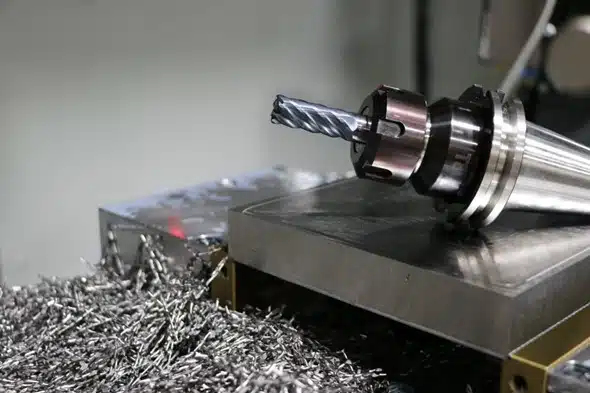
The elasticity of titanium alloys presents challenges during cutting. The workpiece’s elastic deformation can induce vibrations and increase friction, generating additional heat. This compounds the existing heat dissipation issue with titanium alloy. In addition to its low modulus of elasticity, titanium exhibits a relatively substantial elongation at break value. It can stretch to over 150% of its original length before breaking. As a result, titanium tends to produce extended, thin chips that can harm the cutting tool and leave marks on the workpiece’s surface.
3. Slow Material Removal Rates
The challenges associated with slow material removal rates in titanium alloys primarily stem from their unique properties. These alloys are known for their high strength, which makes them inherently tougher to machine. Moreover, their low thermal conductivity complicates the dissipation of heat generated during machining, potentially affecting tool life and part quality.
Furthermore, the tendency of titanium alloys to produce long, thin chips is also a reason for the slower material removal rates. It can reduce machining efficiency and tool wear, necessitating precise machining techniques and specialized tooling to maintain productivity.
Machining Strategies for Best Results
In response to the growing need for titanium, machinists are actively devising innovative approaches to enhance the machinability of this metal. Here are some practical tips to get optimum results:
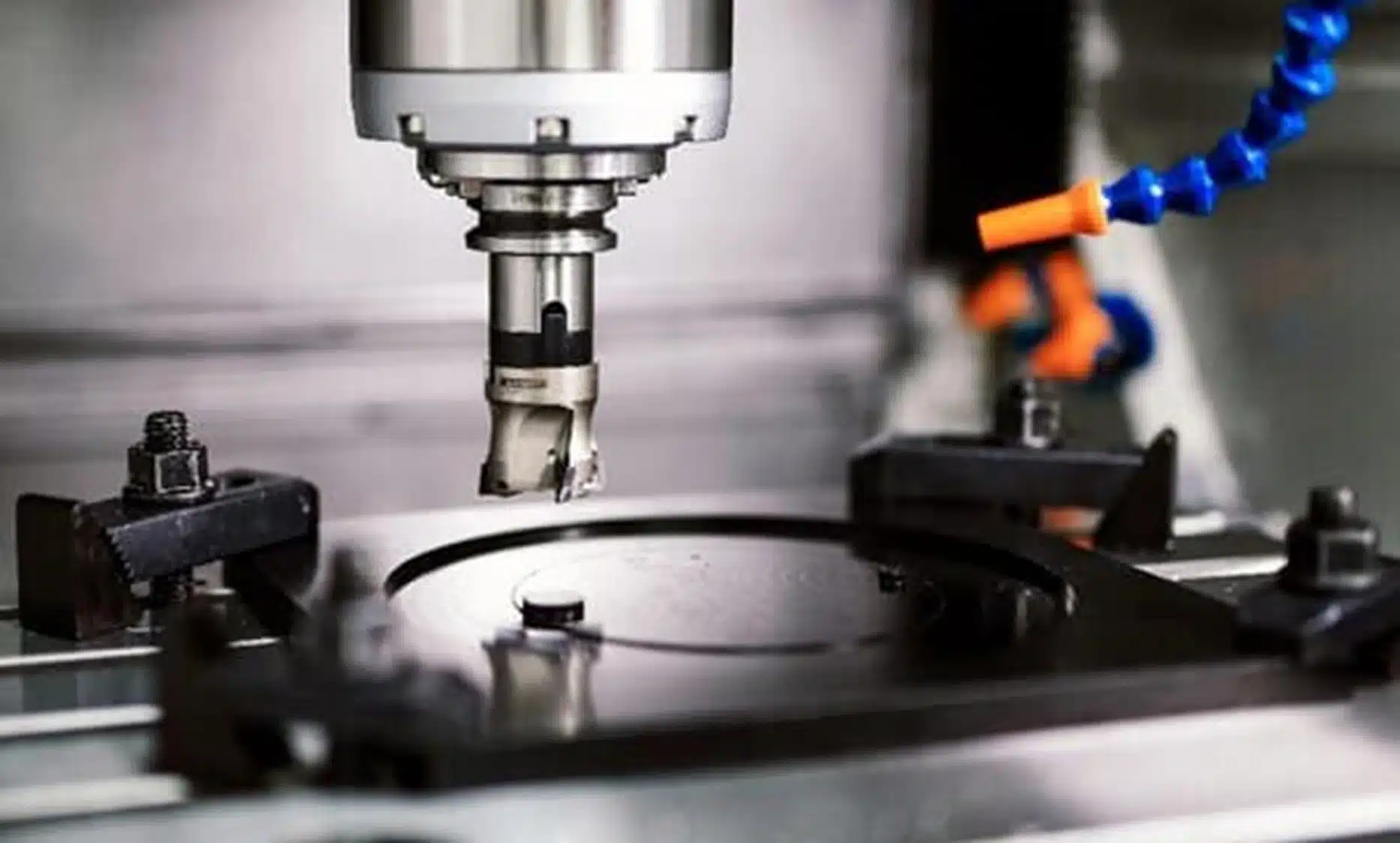
1. Use Cutting Tools with Durable Materials and Geometric Shapes
Selecting high-quality, titanium-specific tools designed to withstand the challenges of this demanding material can significantly improve titanium machining. Ensuring that tools are in optimal condition is crucial. Also, regular inspection and timely replacement of worn-out equipment can help maintain efficiency and precision.
Furthermore, choosing tools with smaller diameters and more cutting edges is a smart strategy. This helps maintain a steady workpiece removal rate and also assists in managing the heat generated during the process. Smaller, more numerous cutting edges distribute the cutting load effectively. This reduces the risk of overheating and tool wear, which can be particularly problematic when working with titanium.
2. Keep the Blade Edge Sharp
During machining, titanium molecules from the workpiece tend to accumulate in front of the cutting blade. Under the combined influence of high pressure and elevated temperatures, these molecules effectively “weld” onto the blade. This gives rise to what’s known as a built-up edge. Therefore, using specialized blade materials and geometric shapes is important when working with titanium alloys.
To optimize the machining process, it’s essential to maintain a sharp cutting edge on the tools. Dull tools contribute to thermal concentration and wear out quickly, increasing the likelihood of tool failure. Keeping the blades sharp will help minimize the heat generated during machining. This enhances tool longevity and helps achieve more precise cuts.
3. Use a Large Tool-tip Radius or Chamfered Cutting
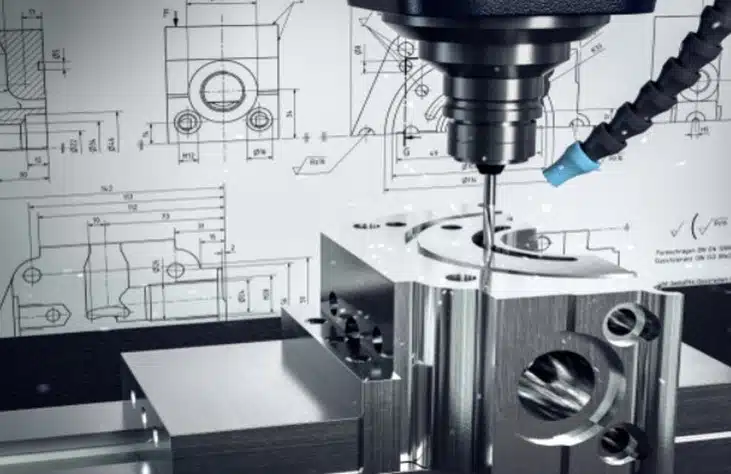
Enhance the tool-tip geometry by incorporating a larger radius or chamfered cutting edges. Doing this will help you maximize the number of blades involved in the cut. This approach effectively reduces cutting forces and minimizes localized heat. When milling titanium alloys, cutting speed and radial cutting depth influence tool life. Blade groove wear during the machining of titanium alloys typically occurs locally along the cutting depth direction. As a result, it causes wear at both the back and front of the blade. This wear often occurs from the presence of a hardened layer left behind by prior machining.
Additionally, the chemical reactions and diffusion occurring between the tool and workpiece material at temperatures exceeding 800℃ contribute to the formation of groove wear. Therefore, adjusting these parameters and optimizing tool geometry can go a long way in extending tool life. It will also help maintain efficiency when working with titanium alloys.
4. Optimizing Feed Speed and Cutting Speed
You must carefully calibrate your feed rates, spindle speeds, and chip loads during titanium machining. This practice helps manage the stress exerted on tools and machinery, preventing excessive dwell time in a single spot. A beneficial strategy involves exploring alternative cutting methods.
You can increase the axial cut depth while simultaneously reducing radial engagement. Such an adjustment can enhance cutting efficiency and reduce the heat generated during machining. This way, you have more productive and controlled titanium machining operations.
5. Ensuring Consistent, Aggressive, and Deep Cuts
Consistent, aggressive, and deep cuts reduce the contact time between the tool and the workpiece, minimizing the chances of work hardening. Removing material swiftly and efficiently also helps manage the heat generated during the process. As a result, these cutting approaches can enhance tool life. The combination of consistent, aggressive, and deep cuts optimizes the machining process for titanium alloys. It helps you strike a balance between efficiency, precision, and tool longevity.
6. Utilizing High-Pressure Coolant Systems
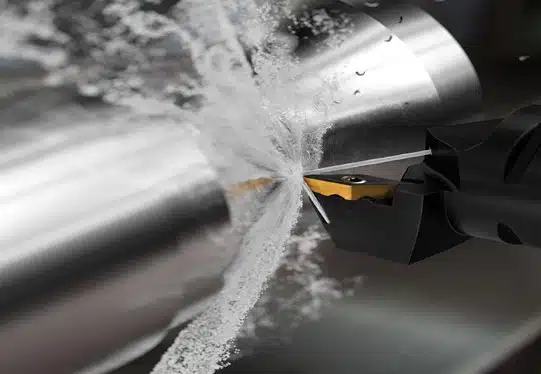
Controlling temperature during titanium machining is crucial. High-pressure coolant directed at the cutting area keeps the workpiece and tools cool while preventing chip adherence. It also ensures thermal stability and helps avoid workpiece surface denaturation and tool damage due to excessive temperatures. Increasing coolant concentration also proves beneficial in maintaining tolerances and extending tool life during titanium machining.
7. Applying Suitable Coatings on Tools
Achieving success in titanium machining hinges on the use of coated high-frequency steel tools. Tools with coatings like titanium carbo-nitride (TiCN) or heat-resistant titanium aluminum nitride (TiAlN) have the durability required for extended use. These specialized tools are designed to withstand the high temperatures and forces associated with titanium machining. Their ability to maintain sharpness over time is vital when working with challenging materials like titanium.
Interesting Testing! iPhone 15 Pro Drop Test! Is Titanium Stronger?
In the video below, a drop test was conducted to compare the durability of the iPhone 14 Pro and the new iPhone 15 Pro. This test gives a better insight into the strength, durability, and functionality of the 15 Pro model against the 14 Pro.
Conclusion
Titanium and its alloys offer several advantages that make it useful for mobile devices. Apple is exploring these features to improve the quality of their products, as we see with the iPhone 15 Pro models. The Grade 5 titanium ensures the phones offer a perfect combination of lightness and strength. The brushed finish makes scratches less visible, further improving the aesthetic appeal.
While titanium is highly advantageous, it can offer many challenges during machining. Therefore, you must work with the best manufacturing partner to get the best result. RapidDirect’s experts understand the intricacies involved in titanium machining, and we are ready to help with your projects. We combine advanced tooling with top-notch expertise to deliver CNC machining services beyond your expectations. Contact us today, and let’s discuss your project further.
